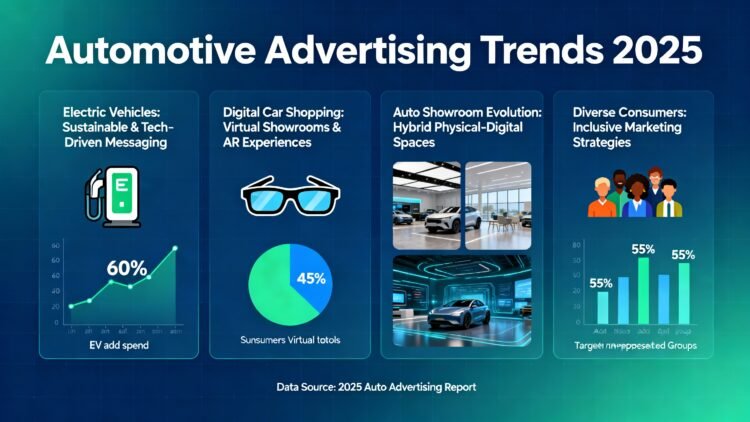Driving the Future of Automotive Advertising: Key Trends and Strategies for 2025
The automotive industry is in the midst of a rapid transition, with 2025 bringing unique opportunities and challenges for advertisers. While global car sales are stabilizing—pressured by tariffs, inflation, and rising costs—the momentum for electric vehicles (EVs) continues to build, reshaping both the market and consumer expectations.
1. The Rise of Electric Vehicles and Sustainability
Electric vehicles are fast becoming a dominant force. Even as overall sales flatten, demand for EVs is surging thanks to advancements in technology, increased sustainability awareness, and a growing base of eco-conscious consumers. For advertisers, this means showcasing innovation and commitment to sustainability isn’t just a value-add—it’s often essential for attracting next-gen buyers.
2. The Digital-First Automotive Shopper
The traditional car-buying journey—visiting multiple showrooms, test-driving models, engaging directly with dealerships—is fading. Today, a significant share of consumers, particularly younger buyers, are moving their research and purchasing decisions online. Digital touchpoints like websites, comparison platforms, video content, and authentic peer reviews play a pivotal role. Successful automotive brands now prioritize digital advertising, ensuring their presence across the key platforms where buyers begin and end their journeys.
3. Affordability Becomes Paramount
Economic pressures are influencing purchase decisions more than ever. With tariffs raising the cost of imports and a heated demand for used cars, affordability has become the most important criterion for prospective buyers. This is especially true for families and budget-conscious consumers. Advertising strategies are evolving by focusing on financing options, long-term value, and ownership costs, helping brands stand out in an increasingly competitive landscape.
4. Efficiency and Smarter Targeting in Ad Spend
As auto remains one of the largest digital ad categories, brands are scrutinizing ad spend, seeking greater efficiency and measurable results. Wasteful advertising is being replaced by data-driven, targeted campaigns that speak directly to the unique needs of each audience segment—whether it’s Gen Z EV enthusiasts, tech-savvy millennials, or value-driven families. Advertisers are leveraging omnichannel approaches, actionable insights, and refined messaging to maximize impact and ROI.
5. Putting the Consumer’s Journey Front and Center
Modern automotive advertising is not just about showcasing the latest models—it’s about understanding and facilitating an ever-changing customer journey. Brands that succeed are those that craft tailored responses to evolving buyer preferences, engage authentically across digital touchpoints, and deliver clear value propositions at every stage.
Conclusion
2025 demands a new approach to automotive advertising. From championing EV innovation to prioritizing affordability and embracing digital-first strategies, brands must evolve alongside their audiences. By focusing on efficiency, data-driven insights, and meaningful customer engagement, automotive advertisers can drive real results and remain ahead in a competitive, fast-moving industry.

